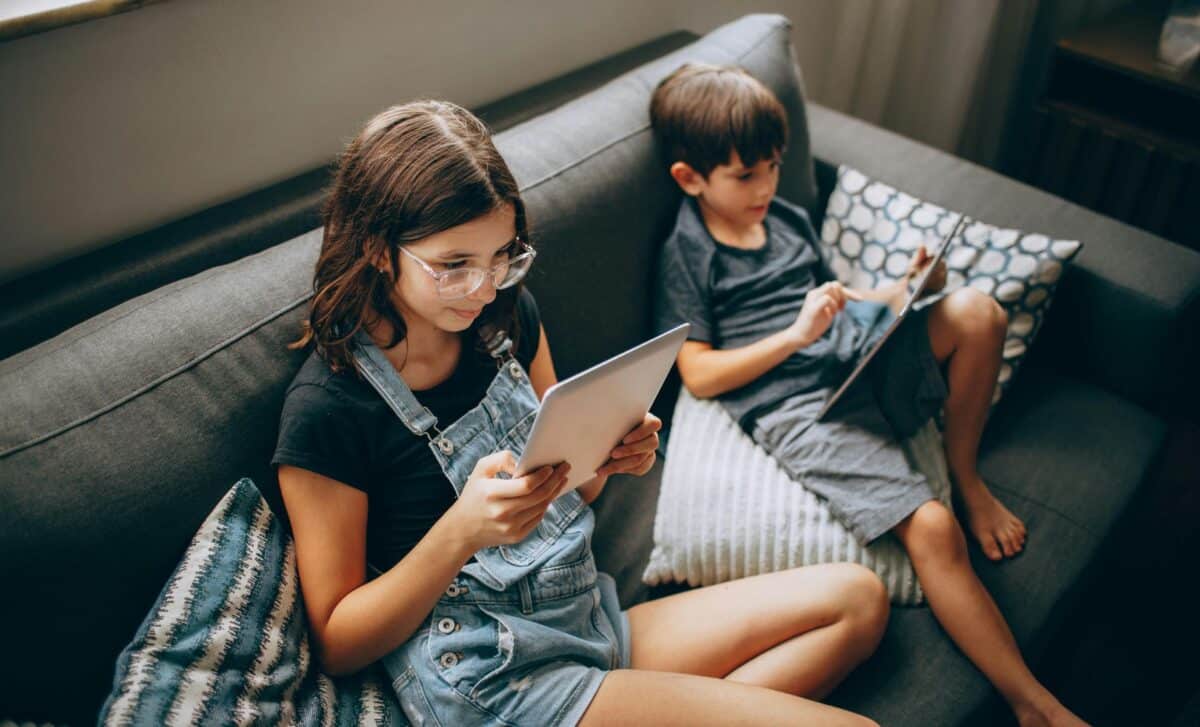In today’s digital age, the conversation around screen time and children’s well-being is more intense than ever. Many parents face the daunting task of regulating their kids’ exposure to screens, often considering outright bans on devices and social media. Yet, as Emma Brockes points out in her recent article for The Guardian, the solution might not lie in strict bans but rather in guiding children towards healthier, more meaningful screen engagement — even if that means binge-watching.
Rethinking screen time: not all hours are equal
For years, the dominant message has been simple: less screen time is better for children’s mental health, behavior, and sleep patterns. Research supports this general idea, linking excessive screen use to negative outcomes. However, Brockes highlights a crucial nuance that often gets overlooked — the type of screen use matters significantly. Passive scrolling through short-form videos like TikTok, Instagram Reels, or YouTube Shorts, which flood users with rapid dopamine hits, is far more damaging than watching a well-crafted TV series or playing an interactive video game with friends.
The recent study by Birmingham University, published in The Lancet Regional Health Europe, adds important context. It found that “there is no evidence to support that restrictive school phone policies, in their current forms, have a beneficial effect on adolescents’ mental health and wellbeing or related outcomes.” This makes sense, considering that most screen time happens after school hours and on weekends, outside the reach of school regulations. Children often spend four to six hours daily on screens, but this time varies drastically in quality.
These 12 Fruits Make You Gain The Most Weight, According To Nutritionists
Binge-watching as a form of nutritional content
Brockes shares a personal insight: instead of banning screens, she encourages her kids to binge-watch shows with substance. The key is to replace the “dopamine-spiking” short videos with engaging narratives that demand attention and offer real storytelling. Shows like Young Sheldon or A Series of Unfortunate Events offer a form of “nutritional content”.
While binge-watching might sound like another form of screen addiction, it is distinct in its effects. The immersive nature of watching several episodes in a row can be mentally engaging and emotionally rewarding without the fractured attention span caused by endless scrolling. Children still need physical activity and social interaction, but controlled binge-watching allows a compromise between screen time and mental health.
Social media and screen-zero myths
Brockes also challenges the often-repeated idea that the best approach is to cut screens entirely. For most families, this is unrealistic — parents often lack the time, energy, or alternative activities to occupy their children fully offline. The blanket “screen-zero” approach can backfire, creating conflicts and leaving children unsupervised with devices when parents are distracted.
Interactive platforms like Minecraft or Roblox, where children can socialize and play collaboratively, offer a healthier alternative to mindless scrolling. Parents who distinguish between different forms of screen engagement can craft more practical, sustainable rules.
A balanced approach in a digital world
The experience shared by Brockes and supported by current research suggests that parenting in a digital age requires flexibility and nuance. It’s less about banning devices and more about steering children towards content that nourishes their cognitive and emotional development.
“This revelation has led to a rare enforcement of rules in our house: I won’t ban screens, but I will ban short videos,” she explained. Instead, guiding children to immersive shows, creative games, and social online activities can transform screen time from a mental drain into a constructive experience.
Parents can set simple rules like banning short-form videos but allowing binge-watching of quality content. This approach can reduce conflict, respect children’s desires to use screens, and improve the overall quality of their digital lives.
Finding balance beyond the screen
Ultimately, the goal remains to ensure children have a rich, varied childhood — with plenty of physical play, social interaction, and offline experiences. But in a world where screens are ubiquitous, aiming for an impossible ban on screen time is neither practical nor beneficial.
Brockes’ approach offers a middle path, where screen time becomes a tool for connection, creativity, and relaxation rather than a source of harm. This perspective invites parents to rethink their relationship with technology and to support their children in navigating digital spaces with care.
By embracing binge-watching as a healthier alternative and focusing on the quality of screen engagement, families may find a way to coexist with screens without sacrificing mental health or well-being.







